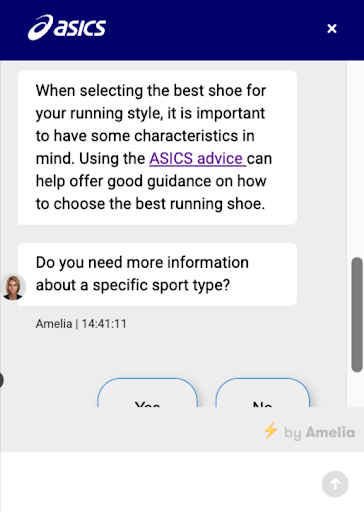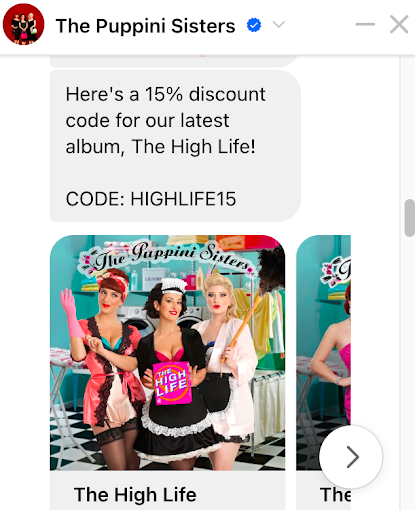In the fast-paced world of digital marketing, chatbots powered by artificial intelligence (AI) are being used more frequently and the ecommerce industry is no exception to this.
Chatbots can be used for a wide range of tasks, from driving sales to working in harmony with an existing customer service team. Throughout my career in Digital Marketing, I have used chatbots in a variety of contexts and multiple sites and channels to drive conversions from existing traffic.
In this article, I’ll be taking a closer look at what chatbots are, the benefits of using them, and how they can make a big impact on ecommerce sales.
What Is a Chatbot?
A chatbot is a computer program that mimics human conversation. In the context of an ecommerce website, shoppers can interact with the software as if they were talking to a real-life person.
What Can Chatbots Do?
Chatbots act like digital assistants and can perform numerous tasks that are highly useful for an ecommerce business. These tasks include, but are not limited to:
- Answering quick questions and providing information to users.
- Collecting contact information such as emails and telephone numbers.
- Gaining valuable insights about customer behaviour.
- Obtaining important feedback from customers.
- Providing an uninterrupted service, regardless of time or day.
- They can integrate with CRM systems, payment gateways, and other ecommerce platforms.
- They can facilitate order placement and confirmation.
- Providing updates on order status and shipping details.
Whilst chatbots can do a vast number of things, it’s important to reiterate that chatbots aren’t here to replace human employees, but rather to complement them.
This is especially crucial for ecommerce stores that may have a limited number of customer service staff. Chatbots, if used correctly, can allow for the automation of regular routine enquiries and allow employees to focus on more complex tasks and issues.
What Shouldn’t Chatbots Be Used For?
Whilst chatbots are incredibly useful in a wide variety of situations, there are times when using them would not be appropriate.
For example, customer service issues that require empathy, deep understanding, or intricate problem-solving are typically beyond the capabilities of a chatbot. It’s important to remember that while chatbots are programmed to respond like a human, they cannot think or emote like one.
Another example would be scenarios involving nuanced or specialised knowledge, like technical support for advanced products or detailed consultations. The limitations of chatbots can become quite obvious, and they may not be programmed to have the advanced expertise or adaptability required.
Although chatbots aren’t the best choice for some complex tasks, they are great at starting conversations and figuring out what a customer needs, making it easier to connect them with the right person for further help.
How Can Chatbots Be Integrated Into the Customer Journey?
When deciding whether to use chatbots on your site, the first thing you need to consider is the customer journey and the searcher’s intent.
Because of this, I do not suggest adding your chatbot to every page of the website.
Whilst you want your chatbot to get seen by as many website users as possible, it’s important that they are the right type of website user, and this is where intent comes in.
Users at the Awareness stage of the AIDA funnel are not focused on adding a product to their shopping cart or making a purchase. At that stage, they are focused on gathering information.
The types of pages where chatbots perform well are bottom-of-funnel pages such as category pages, product pages, pricing pages and FAQ pages. Traffic at this stage is more geared towards converting.
Do Chatbots Improve SEO?
Chatbots, whilst being incredibly useful, don’t directly help your website rank higher in search engine results. The value of incorporating them into an existing SEO strategy is that they are excellent at converting visitors into customers.
Chatbots can often do a better job of that than traditional checkout pages, with recent data highlighting that chatbots can increase website conversion rates by 10-100%.
So, while they won’t increase the number of people visiting your site from search engines, they can help you get more sales from the visitors you already have.
Ecommerce Use Cases
Beyond just offering customer service, chatbots are powerful tools for boosting sales, which is of course a key goal for ecommerce brands. Let’s dive into some compelling use cases on how these smart assistants can be used effectively.
Keeping Customers Engaged on the Site
Chatbots can play a key role in keeping users engaged on a website by introducing them to additional content, such as guides and articles, which can assist in their purchasing decisions.
As users navigate through the site, chatbots can analyse their browsing behaviour and the pages they land on. From there they can then recommend relevant and informative content tailored to their interests.
For instance, if a customer is looking at a specific product, the chatbot can suggest a buying guide or an article reviewing similar products. This not only provides the customer with highly useful information but also enhances their engagement with the site, making them more likely to spend additional time exploring and ultimately making a purchase.
Here’s a clear example: sports brand ASICS’ chatbot asks users key questions to help them make informed purchase decisions.

Cross-Selling and Upselling
Leveraging chatbots for upselling and cross-selling products is a powerful way for ecommerce stores to increase their revenue from existing customers. Chatbots can look at previous buyer behaviour and offer them products that go well with what they’ve already chosen.
In addition to this, chatbots can let customers know about limited-time discounts and even how popular a product is. This sense of urgency can encourage customers to make a quicker decision around buying.
Here’s a straightforward example from swing trio The Puppini Sisters, showcasing relevant discounts to customers.

Prevent and Win Back Abandoned Carts
There are many reasons why a user might abandon their cart and not go through to purchasing. Some examples could be a poor checkout experience, a lack of trust in the brand, or a lack of positive feedback and reviews of the business.
Chatbots can communicate with customers when they’re shopping, helping them with any issues or questions that might stop them from buying products. They can remind shoppers of the items they’ve left in their carts, offer personalised incentives like discounts or free shipping, and provide alternative product recommendations if the original items don’t fully meet the customer’s needs.
“What Can I Help You With Today?”
Chatbots are a great addition to eCommerce stores. These intelligent assistants not only enhance customer interaction and satisfaction but, when synergised with an existing SEO strategy, can lead to remarkable gains in conversions.
Looking to boost your website’s conversions with the smart integration of chatbots? At Re:signal, we offer expert advice on incorporating chatbots to maximise your organic traffic’s potential. Contact us to get started!



